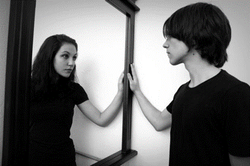Gender Dysphoria, Transgender, Gender Queer
Gender refers to the role we fulfil in a social setting. Terms used to describe aspects of this role often have a reference to femininity or masculinity. For a lot of people their assigned gender at birth (based on their primary sexual characteristics: male/female) aligns with how they feel about themselves. But in the modern times, with more open reflection and honest discussion of feelings, people have expressed an incongruence between their assigned gender and their current feelings. This also refers to people who do not feel comfortable with a binary system of genders (male/female) and feel gender should be a spectrum or not be referred to at all. Gender fluid, gender queer, non-binary, two-spirit, third gender (and many more options) are all variations to describe how a person defines their gender role. In our practice we respect people of all genders and gender expressions. This process often starts with identifying someone's pronouns, to understand the most comfortable way a person wants to be referred to.
Gender dysphoria is a term to describe the distress a person is experiencing because of a discrepancy between assigned gender and experienced gender ("born in the wrong body"). 'Transgender' refers to the process of transitioning (or the wish to transition) to the other gender. In our practice we prefer to define gender on a spectrum instead of holding on to a concept of 2 genders (male/female). To diagnose gender dysphoria these feelings have to exist for at least 6 months but often people have been struggling with these feelings for many years. These feelings of distress can start at a very early age (kids as early as 5 years of age have been reported) or can start at a later age. As you can imagine these feelings can turn a person's life upside down and can trigger a series of complicated decisions. It might have already impacted on many life decisions (such as sexual identity, family life, work, friends) or this is yet to follow. The options for treatment can vary from expressing and understanding what's happening to hormonal treatment and surgery. In young children pausing puberty can be an option to consider. These procedures are not taken lightly and will require professional opinions of multiple medical and psychological professionals. The desire to change gender impacts on many life areas. This could be the reason why a person has suppressed these feelings, because 'it is too hard', 'people won't understand', 'I will lose my family/friends/job'. The percentage of people with gender dysphoric feelings suffering from depression, anxiety and suicidal thoughts is extremely high. We would like to help you and support you and your family through this challenging process. No matter where you are in your process, which goals you have set or how lonely you are feeling, we offer counselling sessions to find the answers and pathway towards a more happy and fulfilling life. Support and guidance
Selma has worked with individuals, partners and families affected by gender problems for many years. She is familiar with the difficulties and feelings of people who are experiencing gender dysphoria. We would like to guide you in this confusing process and discuss the options for treatment with you. Give us a ring to book your initial appointment or have a look at our page on fees/rebates to discover more about our practice.
The official psychological language, laws and rules
|
Useful resources:
|

